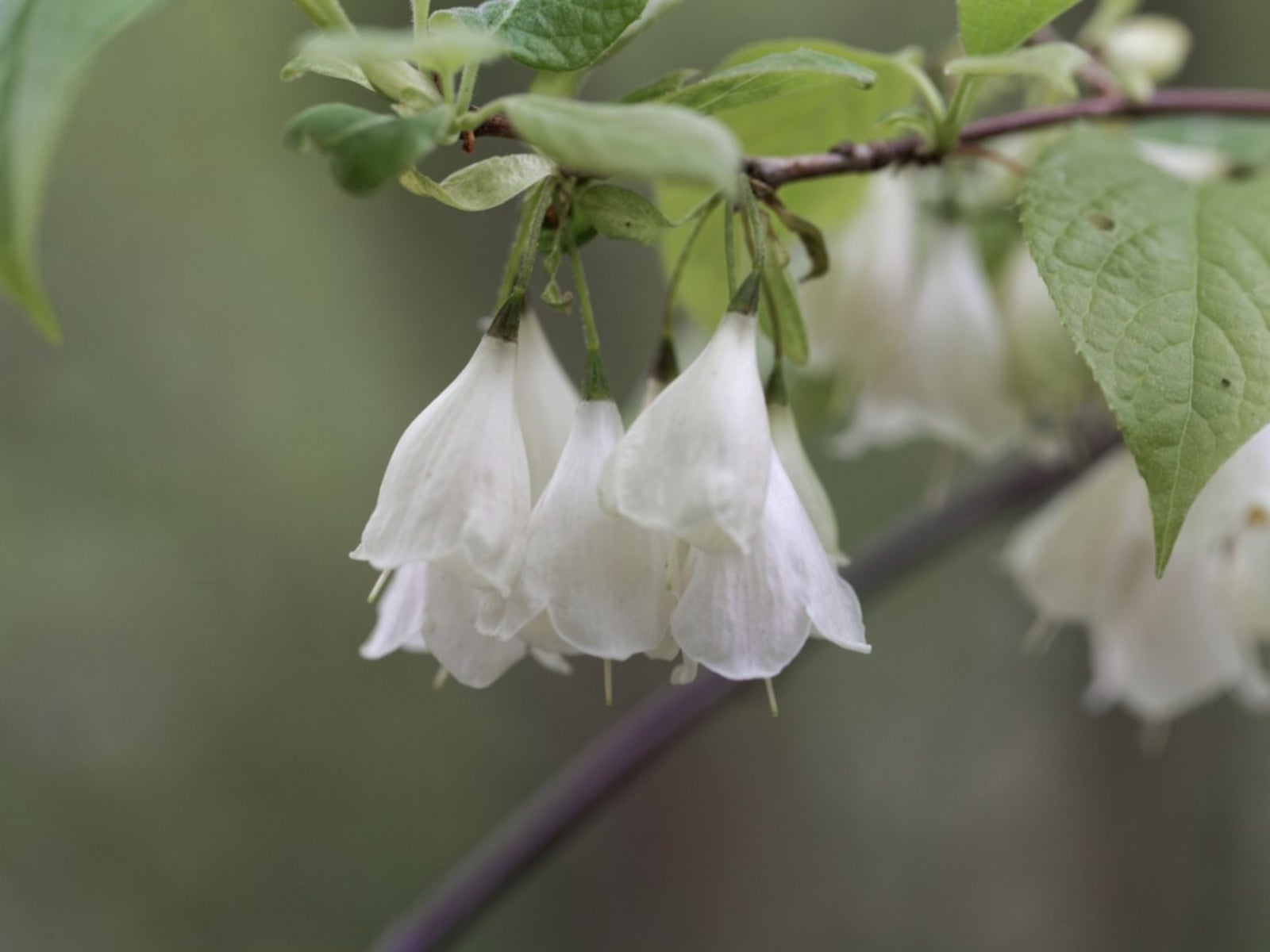Halesia Tree Care: How To Grow A Carolina Silverbell Tree

With white flowers that are shaped like bells, the Carolina silverbell tree (Halesia carolina) is an understory tree that grows frequently along streams in the southeastern United States. Hardy to USDA zones 4-8, this tree sports pretty, bell-shaped flowers from April through May. Trees range in height from 20 to 30 feet (6-9 m.) and have a 15- to 35-foot (5-11 m.) spread. Keep reading for information about growing Halesia silverbells.
How to Grow a Carolina Silverbell Tree
Growing Halesia silverbells is not overly difficult as long as you provide the right soil conditions. Moist and acidic soil that drains well is best. If your soil is not acidic, try adding iron sulfate, aluminum sulfate, sulfur or sphagnum peat moss. Amounts will vary depending on your location and how acidic your soil already is. Be sure to take a soil sample before amending. Container grown plants are recommended for best results.
Propagation by seed is possible and it is best to gather seeds in the fall from a mature tree. Harvest around five to ten mature seedpods that do not have any physical signs of damage. Soak the seeds in sulfuric acid for eight hours followed by 21 hours of soaking in water. Wipe away deteriorated pieces from the pods.
Mix 2 parts compost with 2 parts potting soil and 1 part sand, and place into a flat or large pot. Plant the seeds about 2 inches (5 cm.) deep and cover with soil. Then cover the top of each pot or flat with mulch.
Water until moist and keep the soil moist at all times. Germination can take as long as two years.
Rotate every two to three months between warm (70-80 F./21-27 C.) and cold (35 -42 F./2-6 C.) temperatures.
Choose a suitable location to plant your tree after the second year and provide an organic fertilizer when you plant and each spring thereafter as part of your Halesia tree care until it is well established.
Gardening tips, videos, info and more delivered right to your inbox!
Sign up for the Gardening Know How newsletter today and receive a free copy of our e-book "How to Grow Delicious Tomatoes".
-
 Looking For Plants To Give You The Soft And Fuzzies? Try These 5 Fuzzy Leaf Plant Options
Looking For Plants To Give You The Soft And Fuzzies? Try These 5 Fuzzy Leaf Plant OptionsLovers of texture, drama, silver foliage and tactile plants will adore these special sensory garden additions. These fuzzy leaf plant options will leave you all aglow
By Susan Albert
-
 Get Ready For A Summer Of Hummers! Grow These Full Sun Hummingbird Plants and Flowers
Get Ready For A Summer Of Hummers! Grow These Full Sun Hummingbird Plants and FlowersIf you’re lucky enough to enjoy a sunny backyard, make sure you are maxing out on your pollinator opportunities and grow these full sun hummingbird plants and flowers
By Tonya Barnett